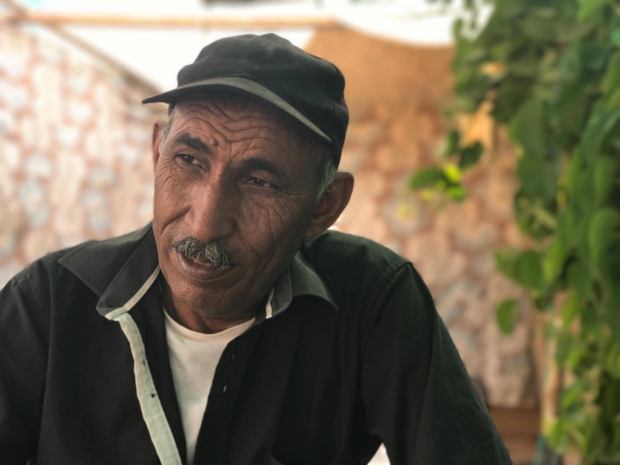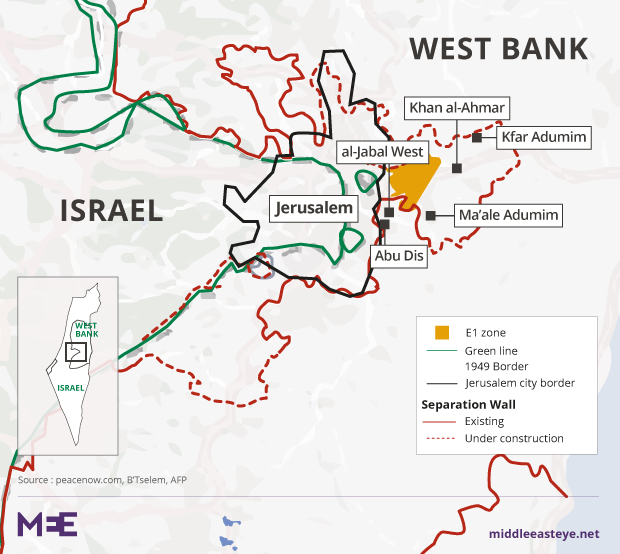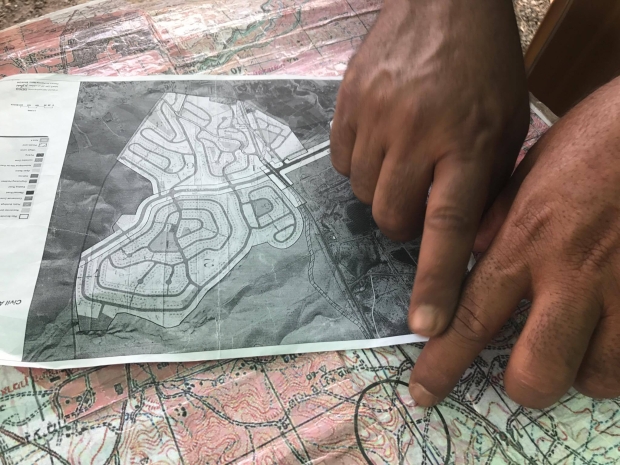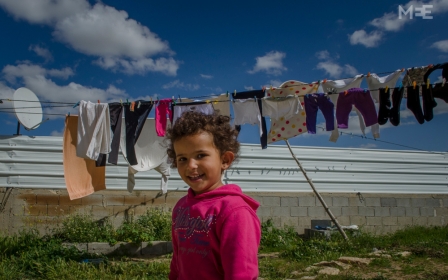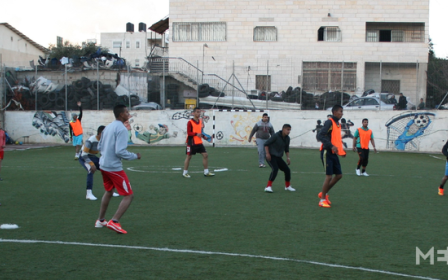'We refuse to go': Bedouin village vows to resist as threat of Israeli demolition looms
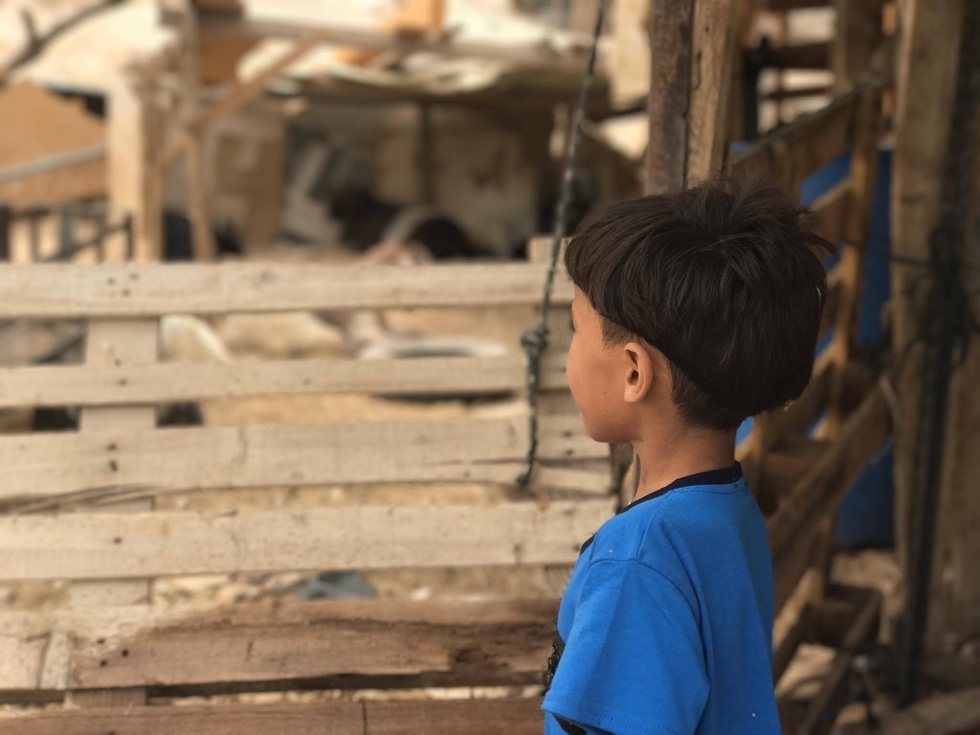
KHAN AL-AHMAR, Occupied West Bank - Residents of a West Bank Bedouin village threatened with demolition by Israel have vowed to resist efforts to relocate them to a site alongside a toxic rubbish dump which they say would amount to destroying their way of life and putting their health at risk.
The Israeli government on Sunday told the country’s high court that it planned to demolish Khan al-Ahmar, a village of 172 people sandwiched between the illegal Israeli settlements of Kfar Adumim and Ma’ale Adumim, by the middle of 2018.
The government's statement marked the latest salvo in its long-running legal battle with the villagers, whose community is located in an area of the Israeli-controlled Area C of the West Bank affected by the so-called E1 plan.
Khan al-Ahmar’s fate now appears to hang on the court’s ruling on two rival petitions: one brought by settlers in Kfar Adumim, who demand that the Israeli government implement a previous order to demolish a village school, and another, brought by the Bedouin residents, that seeks to repeal demolition orders issued against the majority of the homes and structures in the village.
The E1 plan, which was first introduced in 1999 according to Israeli human rights organisation B’Tselem, would see the construction of hundreds of settlement units linking Ma’ale Adumim and Kfar Adumim with occupied East Jerusalem.
The government plan also proposes moving the residents to al-Jabal West, a “relocation” site near a rubbish dump in the Palestinian town of Abu Dis, on the grounds that the village was built without nearly impossible-to-obtain Israeli building permits.
But the Bedouins of the community say there is no justification for Israel’s plans to demolish the village.
'They want to destroy our livelihood'
“Area C was constructed around us and our homes, not the other way around,” Eid Abu Khamis, the spokesperson for Bedouin communities in the Jerusalem district and a resident of Khan al-Ahmar, told Middle East Eye.
“We came here after they [Israel] kicked us out of our homelands during the Nakba,” Abu Khamis said as he unfolded maps of Israel and the West Bank, “and now they want to kick us out of this land, where we have lived for more than 60 years.”
Abu Khamis and the Bedouins of Khan al-Ahmar hail from the Jahalin tribe, native to the Tel Arad district of present-day Israel in the southern Negev desert.
“They want to move us here,” Abu Khamis said, pointing to a map showing Israel’s planned relocation site, “but it is not even theirs to give.”
The plot of land, located next to a massive unregulated rubbish dump, belongs to a Palestinian family from Abu Dis, who Abu Khamis emphasised, have implored the Bedouins of Khan al-Ahmar not to move there.
“The family does not want us there, and even if they did, we would refuse to go,” Abu Khamis insisted, as he recounted stories of Abu Dis children developing serious disabilities and health complications due to the untreated waste permeating the ground in the area.
“We are Bedouins. Having access to open lands where we can take our animals to graze is essential to our lifestyle,” Abu Khamis said, gesturing to the sprawlings hills surrounding the Khan al-Ahmar community. “They are not just threatening to destroy are homes, they want to destroy our livelihood.”
“And they want us to move here?” he asked, pointing back to the map of the small relocation site, wedged between Abu Dis, a main highway, and the garbage dump. “We cannot live there, our animals cannot live there. We will not survive.”
While Abu Khamis and his community reject the prospect of any move to Abu Dis, their current living situation in Khan al-Ahmar is far from ideal.With no ability to build new homes or structures for their livestock, and a lack of basic infrastructure such as an electricity network, a sewage system and proper roads, the community is being strangled by Israel’s strict planning and zoning policies in Area C.
The lack of services in the village, coupled with the constant threat of demolition and violence from surrounding settlements, have created what legal experts call a “coercive environment” for Bedouins in the E1 area.
'Protected people'
Maya al-Orzza, a legal researcher for the BADIL Resource Center for Palestinian Residency and Refugee Rights, told MEE that the Israeli government’s intentional implementation of coercive policies in Khan al-Ahmar and the surrounding areas, amounted to forcible transfer, a violation of the Fourth Geneva Convention.
“According to international law, the West Bank is occupied territory, and these Palestinian Bedouins are part of the occupied population, and as such, they are protected people,” said al-Orzza.
“International humanitarian law completely prohibits the transfer of protected persons from their place of residence through force, which means that any sort of displacement, whether through coercion or direct physical force, could potentially amount to forcible transfer.”
“It also amounts to a war crime according to the Rome Statute, which means that anyone responsible for these acts could be prosecuted in international courts, including the International Criminal Court (ICC).”
Al-Orzza highlighted that these policies were being carried out in a widespread manner, not just against the Khan al-Ahmar community, but against all the Bedouin communities in E1.
“Given that these policies amount to war crimes and crimes against humanity, they trigger legal obligations on any other state in the world to intervene and put an end to these practices in E1,” Al-Orzza told MEE.
The intervention of the international community, for Abu Khamis and the Bedouins of Khan al-Ahmar, is their only hope against displacement.
“Now we are just waiting,” Abu Khamis said, as he folded up the stack of maps laid out before him. “We are waiting for the world to help us stay on this land. And one day, we hope the world will see us return to our homelands as well.”
Middle East Eye propose une couverture et une analyse indépendantes et incomparables du Moyen-Orient, de l’Afrique du Nord et d’autres régions du monde. Pour en savoir plus sur la reprise de ce contenu et les frais qui s’appliquent, veuillez remplir ce formulaire [en anglais]. Pour en savoir plus sur MEE, cliquez ici [en anglais].



